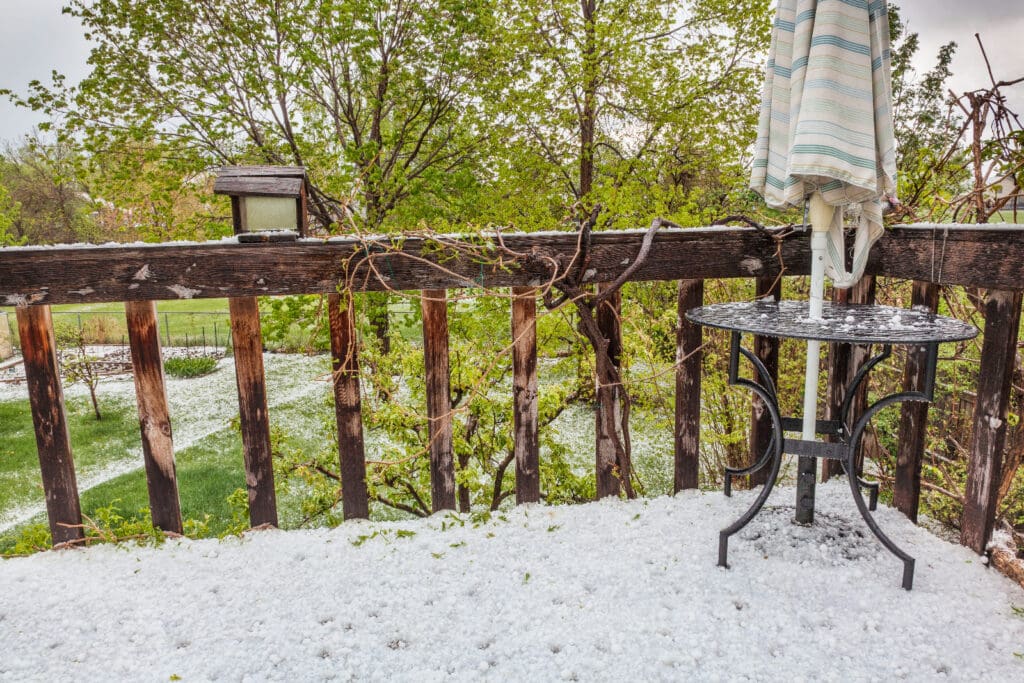
Published on June 2, 2021
Here in the Pacific Northwest, we are accustomed to plenty of rain, wind, and hail. Your roof is built to be durable in all kinds of weather, but sometimes a hail storm can cause significant damage to your roof. The effects of hail on your roof can differ depending on different factors, though.
Some of these factors include the wind direction and speed, the size of hail, and how old your roof is. Even the material used in roofing systems can be affected differently. Whether it’s hail damage, wind damage, or even damage from a fallen branch, if a shingle has been compromised, it may cause roof leaks.
It’s a good idea to check for any storm damage after it passes through. If you notice any signs of hail damage or shingles that need to be repaired or replaced, it’s important to act quickly. Take a look at roof vents for damage, too. Any amount of moisture that’s able to get under the roofing material can cause headaches in the future.
What does hail do to your roof?
If the hail is big enough, it can cause an issue with the roof’s functionality. Hail can also cause cosmetic damage, but if that cosmetic damage is not addressed, it could turn structural in the future. Hail that is ¾ to one inch can be destructive, but anything bigger has the potential to cause even bigger problems.
Although it’s rare we see that kind of hail in our neck of the woods. In places like Colorado, more than 100,000 homeowners issued insurance claims over a three-year period recently. However, when it comes to your roof, hail that’s smaller and less frequent can still do a number on your shingles.
Cracked shingles
High winds combined with hailstones can cause the shingles to crack. Cracked shingles could weaken over time and leave your roof exposed to the elements.
Weakens the shingle’s self-seal
Hail can cause the seal in your shingles to weaken, which is what causes shingles to blow off during windstorms.
Loss of granules
Granules make up the sandpaper-like feel of the shingles. If these granules come off, the asphalt coating of the shingle becomes exposed to the weather and could cause the roof to age prematurely. After a hailstorm, it is important to check if any granules have come off the shingles.
How do you know if you have damage to your roof from a hailstorm?
Missing shingles are usually obvious. However, minor damage can be a bit difficult to diagnose without the proper training. A professional roof inspection from the experts at Warner Roofing is the best way to assess any hail damage on your roof.
Working on the roof after a storm, even on single-story buildings, is dangerous. A professional roofing contractor has the expertise to safely navigate the roof, identify problem areas, and make roof repairs accurately. Experienced roofers should be able to work with composition or asphalt shingles, cedar shakes, slate, or metal roofing.
Warner Roofing and Construction has been working on Southwest Washington roofs for nearly three decades. In addition to repairing hail-damaged roofs, we also install new roofs, re-roofing, and overlays, and perform roof tear-offs and replacements. If there is structural damage to the roof, we can fix that too.
Contact our experts at Warner Roofing if you notice damage to your roof or would like us to do a complete roof inspection.